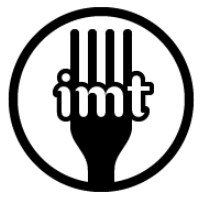We are weeks away from the IMT books being formally published by New Harbinger on 8/1! In preparation, we thought it would be helpful to describe the unique "evidence-based practice" approach that IMT takes.
So, what is an evidence-based practice (EBP) approach? According to Sackett et al. (2000), EBP is the mindful use of the currently available evidence to inform decisions about the implementation of treatment for an individual patient. It includes the following three components:
1) a thorough search of and critical review of the available evidence,
2) a clinician's own experience and expertise, and
3) the preferences of the individual.
The IMT books formalize the EBP process into a written format, with the goal of informing clinicians about how eating disorder specialists may treat various presenting problems. These books are a collection of evidence-based interventions compiled into individual, group, and family therapy modalities, that were - until now - scattered across academic journals and only used by practitioners in-the-know. In short, IMT aims to inform clinicians who do not have such highly specialized training/experience about what the pros actually do in the trenches. Considering the serious lack of training clinicians across all mental health disciplines receive on the treatment of eating disorders, the deadliest of all mental illnesses, it seems to us that this type of practical and informative EBP approach is sorely needed.
Being that IMT takes an EBP approach, the manual is not a rigid protocol that has been investigated by many independent researchers; instead, it is a reflection of what clinicians trained in evidence-based approaches might do in practice, given specific circumstances and patient needs not accounted for by existing protocols. This kind of approach inherently provides the clinician with flexibility and autonomy regarding which interventions to implement, depending on the needs/preferences of the individual patient. As such, there is both a standardized set of interventions in IMT as well as the ability to individualize care for the patient by administering them selectively. In addition to its standardization, flexibility, and ability to be used in an individualized manner, we hope that IMT will be scalable, meaning that it can be easily learned and implemented in practice.
Borrowing a business term, our big hairy audacious goal (B-HAG; yes, that's an actual term) was to create a standardized, flexible, able-to-be-individualized, and scalable treatment with IMT to help with filling in a deadly treatment gap. Considering the step-by-step format of the manual, it has been described as "evidence-based treatment in a box." We aimed to write a manual that benefits both trainees and clinicians in more remote areas of the country/English-speaking world as well as patients and their families.
For updates on the IMT project, sign up at: http://bit.ly/2MiijBQ.
